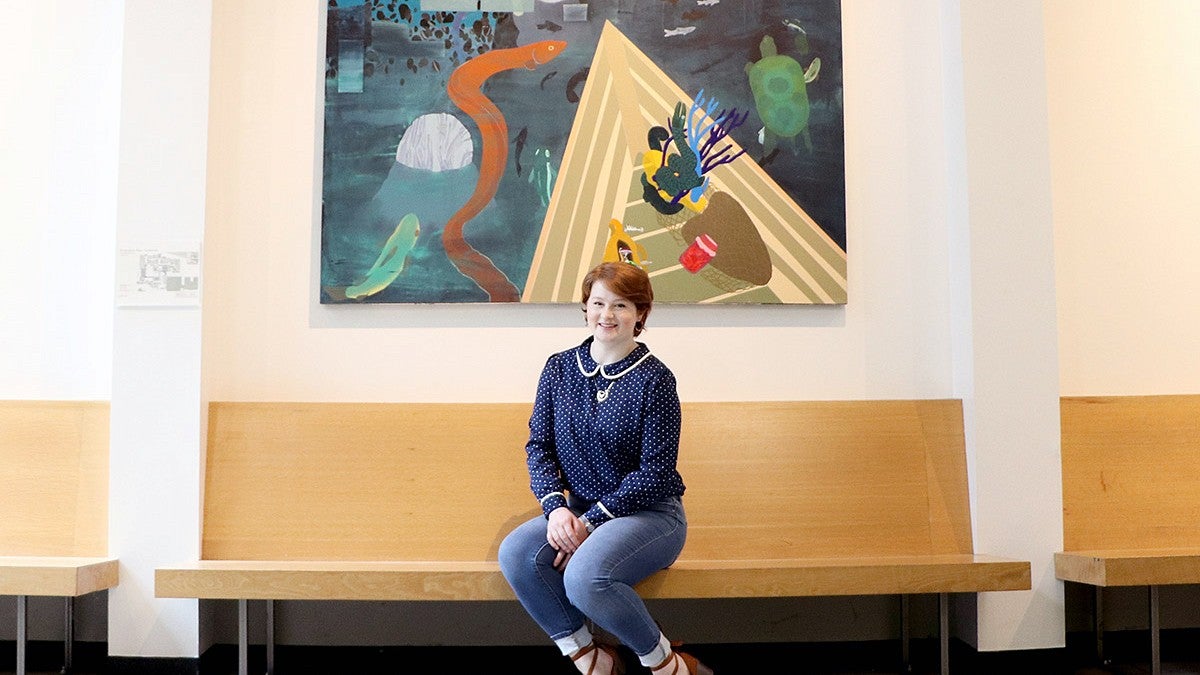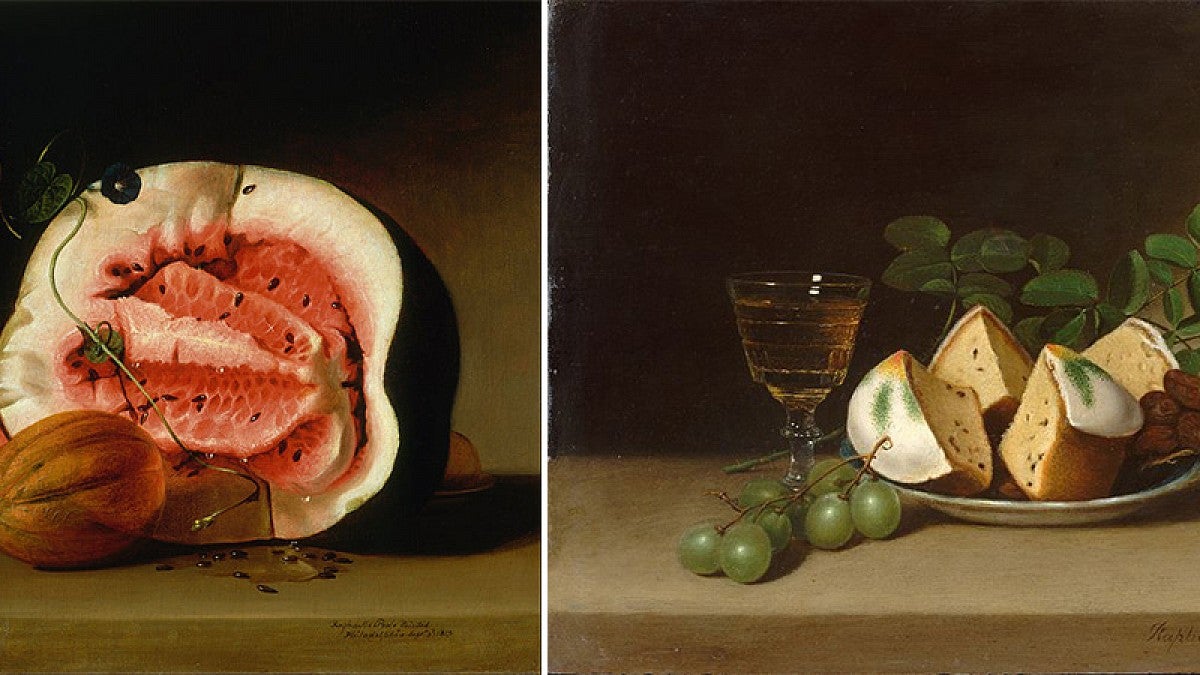
Katelyn Jones has fallen in love with many art histories, from those of Ancient Egypt, South Asia, and Modern Americanism (one of her favorite artists is American still-life painter Raphaelle Peale) to the Romanticism movement. Jones is currently examining the male nudes and homoerotic themes of Romanticism, a period when, she explained, there were many art society brotherhoods.
“While I have difficulty finding a favorite time period or movement, I feel that I am constantly finding questions I want to answer about all art,” said Jones (BA in Art History, class of 2020).
We caught up with Jones before her September trip to London, where she will do a short art history study abroad program led by Keith Eggener, the Marion D. Ross Distinguished Professor of Architectural History in the Department of the History of Art and Architecture.
What most interests you about art history?
I honestly fell into the field accidentally and was unaware that it was a “field” in the first place. I started my college career at the College of Southern Idaho where I was convinced I was going into anthropology. My first semester I took a history course, an anthropology course, and an art history 101 course out of curiosity. I quickly discovered that the history that had fascinated me since grade school wasn’t the names, dates, politics, or biological remains, but rather the material culture—though not to claim that art history does not involve those aforementioned subjects.
I find a creative outlet in the appreciation of art. When I proudly declared to my first art history professor that I would pursue a bachelor’s in the subject, he gleefully danced around declaring that he had won me over to the “dark side.”
Why did you choose the University of Oregon College of Design?
First, there weren’t any leading research programs for art history in the State of Idaho. Second, I had visited Eugene many times while I was growing up and adored its thriving art community. Lastly, I enjoyed the geographical location of the university and saw that many accomplished professors in the field were on faculty. As easy as it was making the decision, the reality of moving from my small town away from all of my family, affording tuition, finding employment, and doing so independently was a challenge. The weeks leading up to my first term at the university, I questioned whether it was the right place for me, but since starting, I haven’t doubted my choice once. I have access to opportunities, scholarships, and faculty that are so impactful on my growth as a student. I wouldn’t change a thing.

Why do you think you were chosen for the Gloria Tovar Lee Scholarship for Most Promising Student in Art History?
When it comes down to the question of why, I don’t know if I am the right person to answer that. Education is something that I genuinely treasure. As difficult as it may be at times to admit to myself, I am proud of my work here at the UO so far. I come from a family that is mainly laborers and farmers, and I am the first in my family to attend university. It can feel as though I stand on a different pedestal than many students here at the UO, whose families’ college careers sometimes go back generations. I feel that I have something to prove to my family, to the university, to my professors, and to myself, that a young woman who hadn’t ever been to an art museum until stepping onto the UO campus just a year ago, can still excel in art history.
I was very lucky to receive the scholarship when I did because the money was put toward my study abroad trip this summer. I am taking a class in London on the history of design and will be staying in the city for two weeks. It will be my first international trip and I am totally nervous-excited. I wouldn’t have been able to do it without the help of that scholarship, so I am incredibly thankful for the faculty of HAA. If you are interested in following my trip, I have set up a public Instagram account (@an_idahoan_abroad) to share all the wonderful things about this study abroad opportunity.

What do you hope to do with your degree?
Now that’s the real question isn’t it? When I decided that my BA would be in art history, I made the choice with the goal of getting my graduate degree in Library and Information Science. I did this because I have a strong love for libraries and have already started a career in them [Jones currently works at the Eugene Public Library].
Until recently, I couldn’t admit to myself that I also made that plan because it was safe. I excel in a library environment and enjoy the work. The constant familial and societal reality checks have kept me in a comfort zone, or I guess a more financially responsible zone. This changed when I received the Gloria Tovar Lee Scholarship.
I am, as I’m sure many undergraduates are, deeply insecure about my own intelligence and academic abilities. It is difficult on a campus this large to feel recognized for good work and so I have felt bleakly mediocre. There have been moments during art history courses that I have felt that I was not smart enough, didn’t have enough of an expansive vocabulary, or couldn’t function in any impactful way within the field so the pursual of a graduate degree in art history seemed ridiculous.
Upon the reception of the scholarship, the kind words of encouragement and feelings of faculty support that have followed have helped me realize that a graduate degree is possible for myself. The monetary value of the scholarship is so appreciated, but it was the recognition that truly changed my life. So that doesn’t answer the question at all because I don’t have one yet. I will be writing an honor’s thesis that I hope to use for the application to the university’s graduate program, but whether it’s art history or library science, a graduate degree is a sure thing post-graduation.
For more information about career options for art history graduates, visit the Career Resources page which outlines paths in many fields including museums and galleries, non-profits, education, and media.
